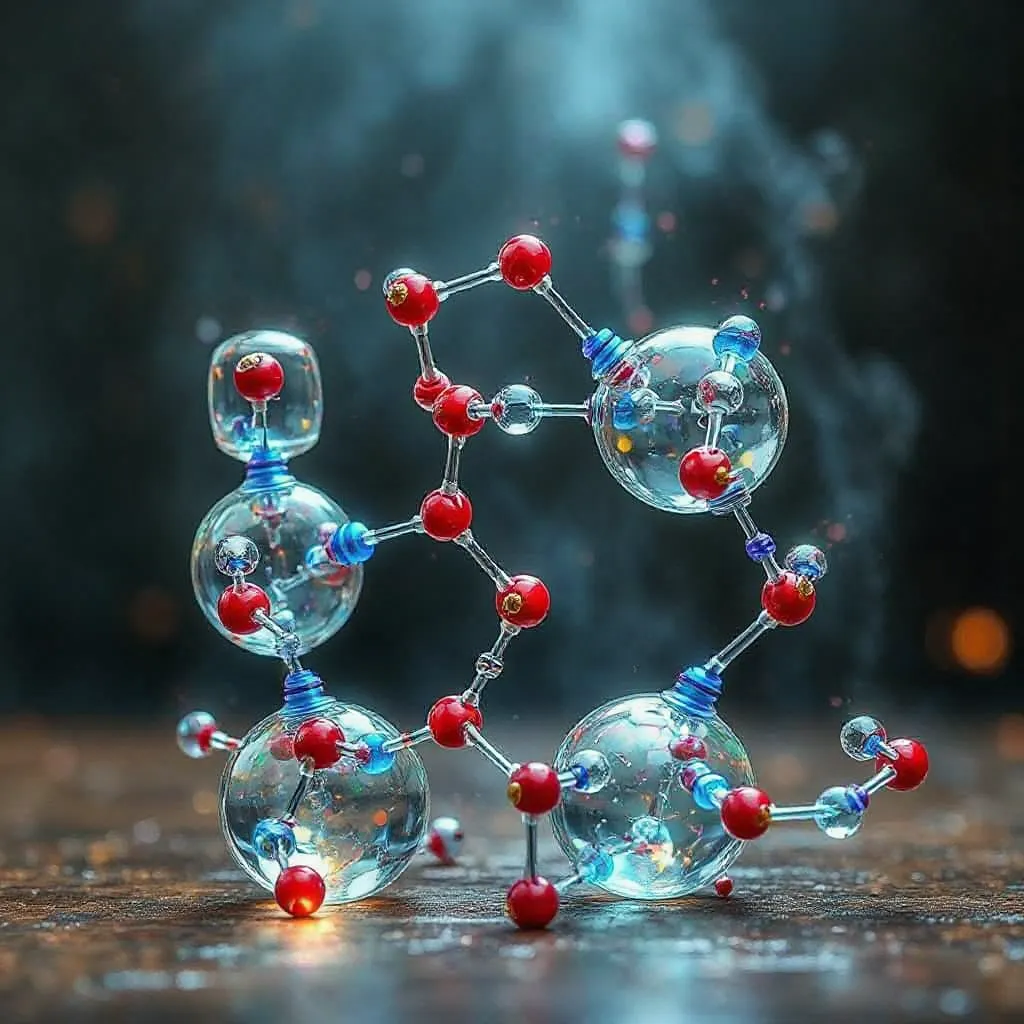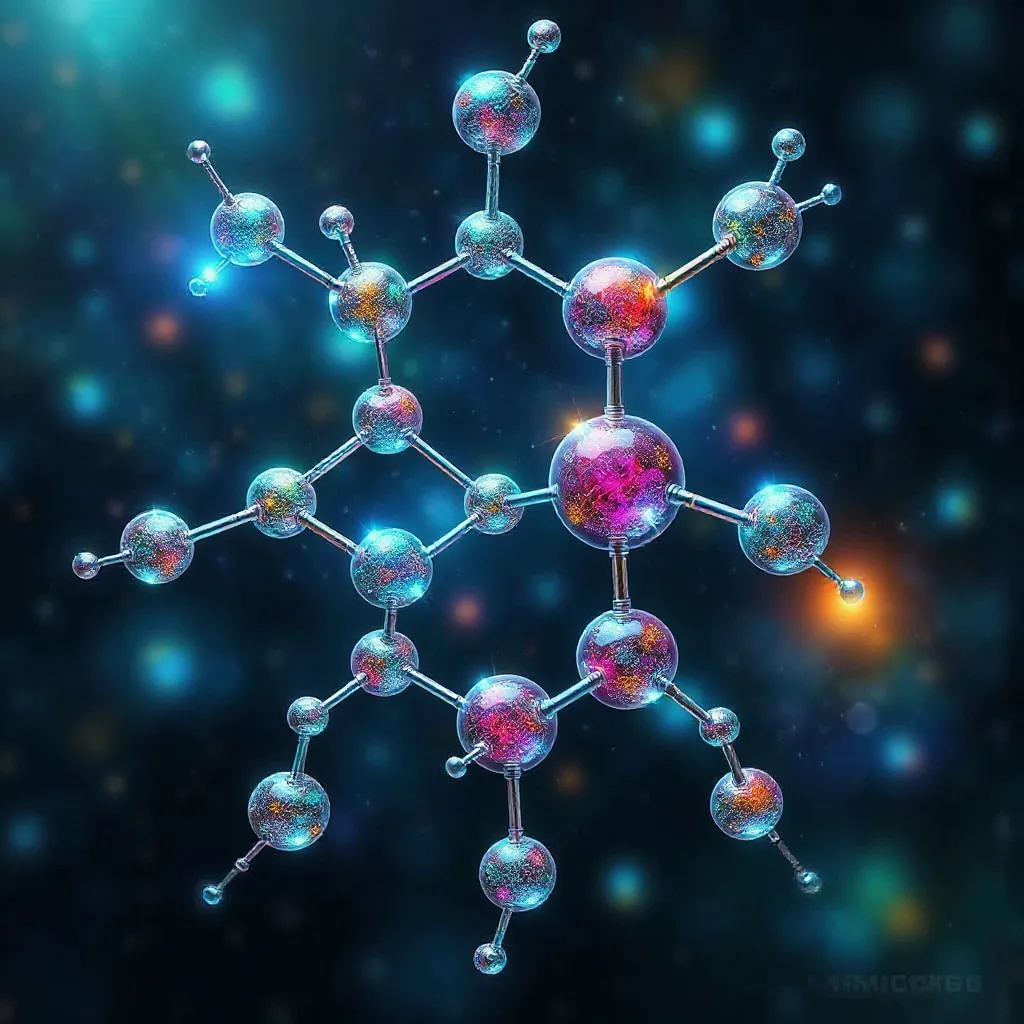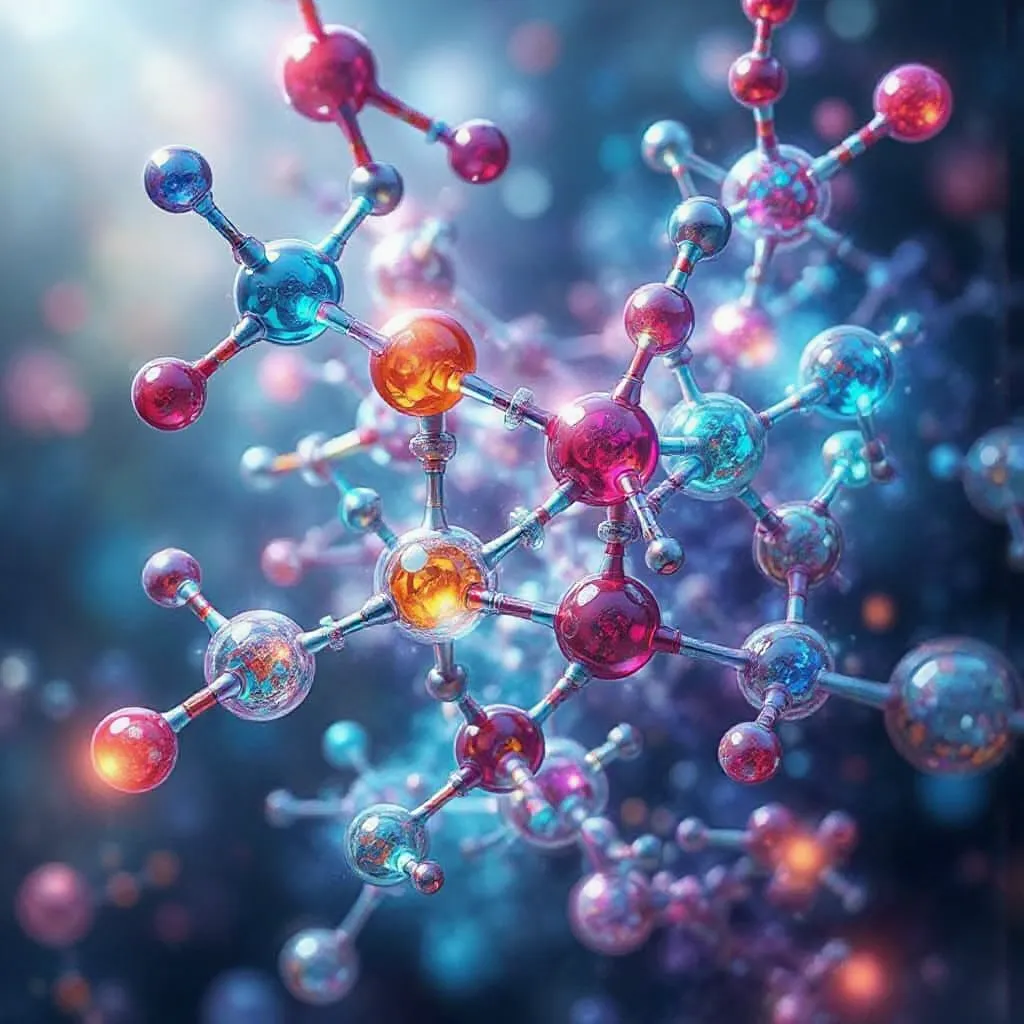Why Chloride Matters in Cancer and Tumors

You might not think about chloride ions when considering cancer research, but their role is critical. These tiny particles help regulate how cells grow, move, and interact with their surroundings. Chloride affects cancer cells directly, shaping their behavior and their ability to spread. It also plays a major part in the tumor microenvironment, influencing how tumors develop and survive. When you understand the cancer and importance of chloride, you can see why researchers focus on this area to find better treatments.
Key Takeaways
Chloride ions help cancer cells move by controlling their size. Learning about this may lead to ways to stop cancer from spreading.
Blocking chloride channels, like CLIC1 and ANO1, could stop cancer signals and make treatments work better, especially for tough cancers.
Chloride changes the area around tumors, affecting acid levels and the immune system. This could help create new ways to boost the immune system to fight tumors.
Studies show that high chloride in cancer cells helps them live and grow. Stopping this might slow down tumor growth.
Future cancer treatments might use custom methods to target chloride channels, helping patients get better results.
Cancer and Importance of Chloride in Cell Behavior

Chloride's Role in Cell Volume Regulation and Migration
Chloride ions play a vital role in how cancer cells regulate their size and move through tissues. When cancer cells migrate, they must adjust their volume to squeeze through tight spaces in the extracellular matrix. This process, known as regulatory volume decrease (RVD) and regulatory volume increase (RVI), depends heavily on chloride transport. Proteins like the sodium-potassium-chloride cotransporter (NKCC1) help maintain the balance of ions inside the cell, creating osmotic gradients that drive water movement. These gradients allow cells to shrink or swell as needed during migration.
Studies have shown that migratory cancer cells often express higher levels of ion transport proteins, such as anion exchanger 2 (AE2) and epithelial Na+ channel (δ‐ENaC). Glioma cells, for instance, exhibit significantly elevated intracellular chloride levels compared to noncancerous cells. This heightened chloride activity supports their invasive behavior. Blocking chloride channels or transporters can disrupt these processes, reducing the ability of cancer cells to migrate and invade surrounding tissues.
Here’s a summary of key findings from research on chloride's role in cell volume regulation and migration:
Chloride is essential for creating osmotic gradients that enable cell protrusion and retraction.
Increased expression of ion transport proteins, such as AE2 and NKCC1, is linked to cancer cell migration.
Glioma cells rely on chloride to maintain their invasive properties.
Inhibiting chloride channels can impair cell volume changes and migration.
Chloride Channels and Their Impact on Cancer Cell Signaling
Chloride channels do more than regulate cell volume; they also influence critical signaling pathways that drive cancer progression. For example, chloride intracellular channel 1 (CLIC1) has been identified as a key player in cancer cell behavior. CLIC1 is overexpressed in many tumor types and changes its localization during the cell cycle, which is associated with malignant transformation. Experimental data reveal that inhibiting CLIC1 enhances calcium and reactive oxygen species signaling in A549 human lung cancer cells, suggesting its potential as a therapeutic target.
Other chloride channel proteins, such as chloride channel accessory proteins (CLCAs), also play a role in cancer signaling. Research indicates that low levels of CLCAs correlate with cancer development, while their overexpression can inhibit pathways like FAK/ERK, which are involved in cell proliferation and survival. In esophageal squamous cell carcinoma, silencing CLIC1 has been shown to reduce tumor growth by affecting the PI3K-Akt and mTOR signaling pathways.
The table below highlights some key studies on chloride channels and their impact on cancer signaling:
Study Focus | Findings | Cancer Types | Signaling Pathways |
|---|---|---|---|
CLCAs and cancer | Low levels of CLCAs correlate with cancer; overexpression inhibits FAK/ERK signaling | Nasopharyngeal, breast, colorectal | FAK/ERK |
CLIC1 in ESCC | Silencing CLIC1 inhibits proliferation; correlates with TNM stage and PI3K-Akt signaling | Esophageal squamous cell carcinoma | PI3K-Akt, mTOR |
These findings underscore the importance of chloride channels in cancer biology. By targeting these channels, researchers may uncover new ways to disrupt cancer cell signaling and slow tumor progression.
Cancer and Importance of Chloride in Tumor Progression

How Chloride Influences the Tumor Microenvironment
Chloride ions play a critical role in shaping the tumor microenvironment, which is the surrounding area where cancer cells grow and interact with other cells. This microenvironment includes blood vessels, immune cells, and extracellular matrix components. Chloride helps regulate the pH levels and ion balance within this space, creating conditions that favor tumor survival and growth.
Cancer cells often accumulate high levels of chloride ions, which contribute to their ability to adapt to the harsh conditions of the tumor microenvironment. For example, glioma cells have been found to contain intracellular chloride concentrations of approximately 100 mM, compared to only 40 mM in normal astrocytes and 10 mM in neurons. This elevated chloride concentration helps cancer cells control their volume, which is essential for migration and proliferation.
In glioma cells, intracellular chloride concentrations are significantly higher (∼100 mM) compared to normal cells (∼40 mM in astrocytes and ∼10 mM in neurons). This accumulation of chloride is crucial for regulating cell volume, which affects migration and proliferation—key factors in tumor progression. The study also indicates that chloride efflux is necessary for mitotic cells to condense their cytoplasmic volume, further linking chloride dynamics to cell proliferation.
By influencing the tumor microenvironment, chloride ions also affect how cancer cells evade the immune system. Acidic conditions, driven by chloride and other ions, can suppress immune cell activity, making it harder for your body to fight the tumor. This highlights why understanding the cancer and importance of chloride is so vital for developing new treatments.
Chloride's Role in Angiogenesis and Metastasis
Angiogenesis, the formation of new blood vessels, is a process that tumors rely on to receive nutrients and oxygen. Chloride ions contribute to angiogenesis by regulating the signaling pathways that control blood vessel growth. Proteins like chloride intracellular channel 3 (CLIC3) are often overexpressed in cancer cells and play a significant role in promoting angiogenesis.
High levels of CLIC3 have been linked to poor outcomes in lung cancer patients. Studies show that CLIC3 expression correlates with reduced survival rates, as demonstrated by Kaplan–Meier plotter analysis. This protein is overexpressed in lung cancer cells at both the mRNA and protein levels, making it a potential target for therapy.
Evidence Type | Description |
|---|---|
CLIC3 Expression | High levels of CLIC3 in lung cancer cells correlate with poor patient outcomes. |
Survival Analysis | Kaplan–Meier plotter analysis shows a significant negative correlation between CLIC3 levels and survival in lung cancer patients. |
Validation | CLIC3 was confirmed to be overexpressed in lung cancer cells compared to normal cells at both mRNA and protein levels. |
Chloride ions also play a role in metastasis, the process by which cancer spreads to other parts of the body. By regulating cell volume and migration, chloride helps cancer cells move through tissues and enter the bloodstream. Once in the bloodstream, these cells can travel to distant organs and form new tumors. Targeting chloride channels and transporters could disrupt these processes, offering a potential strategy to limit metastasis.
Understanding the cancer and importance of chloride in angiogenesis and metastasis provides valuable insights into how tumors grow and spread. By focusing on chloride dynamics, researchers may uncover new ways to slow tumor progression and improve patient outcomes.
Implications of Chloride in Cancer Research and Treatment
Targeting Chloride Channels as a Therapeutic Strategy
Chloride channels offer promising opportunities for cancer treatment. These channels regulate critical processes like cell signaling, migration, and proliferation, making them ideal targets for therapeutic intervention. By inhibiting specific chloride channels, you can disrupt the pathways that cancer cells rely on to grow and spread.
Research highlights the potential of targeting chloride channels such as ANO1 and ClC-3 in breast cancer. These channels influence the HER2 gene, which plays a key role in cancer progression. Inhibitors of ANO1 have shown promise in enhancing the effectiveness of anti-HER2 therapies, especially for patients who develop resistance to these treatments. Additionally, blocking TMEM16A/ANO1 increases sensitivity to EGFR and HER2-targeted therapies, suggesting that chloride channel inhibitors could help overcome drug resistance in various cancers.
This approach isn't limited to breast cancer. Chloride channels are overexpressed in many tumor types, including lung, colorectal, and gliomas. By targeting these channels, you can potentially reduce tumor growth, limit metastasis, and improve the effectiveness of existing treatments. Researchers are exploring chloride channel inhibitors as part of combination therapies to maximize their impact on cancer cells.
Challenges and Future Directions in Chloride-Focused Cancer Research
Despite the promise of chloride channel-targeted therapies, challenges remain. One major obstacle is understanding the complex roles of chloride channels in different cancer types. These channels often perform multiple functions, and blocking them could affect healthy cells as well. You need precise strategies to target cancer-specific chloride activity without harming normal tissues.
Another challenge involves drug development. Many chloride channel inhibitors are still in preclinical stages, and their safety and efficacy in humans require further validation. Clinical trials must address potential side effects and determine optimal dosages for different cancers.
Future research should focus on identifying biomarkers that predict which patients will benefit most from chloride-targeted therapies. Advances in imaging and molecular profiling could help you pinpoint chloride channel activity in tumors, enabling personalized treatment approaches. By continuing to explore chloride dynamics, researchers can unlock new possibilities for cancer therapy and improve outcomes for patients.
Chloride ions play a central role in cancer biology, influencing how cells behave, tumors progress, and the microenvironment adapts. Their involvement extends to drug resistance, where chloride channels like ClC-3 contribute to multi-drug resistance by activating pathways such as NF-κB and acidifying intracellular compartments. This acidification supports the Akt/mTOR pathway, which enhances cancer cell survival.
Overexpression of ClC-3 has been linked to resistance in cancers like breast cancer and multiple myeloma.
Silencing ClC-3 increases cancer cell sensitivity to treatments like cisplatin by reducing autophagy and promoting apoptosis.
Chloride channels interact with proteins like P-glycoprotein, further complicating drug resistance mechanisms.
Targeting chloride channels offers a promising path for cancer therapy. However, you must address challenges like minimizing harm to healthy cells. Continued research could unlock innovative treatments, improving outcomes for patients worldwide.
FAQ
What is the role of chloride in cancer cell behavior?
Chloride ions regulate cancer cell volume and migration. They help cells move through tissues by creating osmotic gradients. This process supports cancer spread and invasion, making chloride essential in understanding cancer and importance of chloride in cell behavior.
How do chloride channels affect tumor progression?
Chloride channels influence tumor growth by regulating signaling pathways. They control processes like angiogenesis and metastasis. Overexpression of certain chloride channels often correlates with aggressive tumor behavior, making them potential targets for therapy.
Can targeting chloride channels improve cancer treatment?
Yes, targeting chloride channels can disrupt cancer cell signaling and migration. This approach may enhance the effectiveness of existing treatments and reduce drug resistance. Researchers are exploring chloride channel inhibitors for various cancers.
Why is chloride important in the tumor microenvironment?
Chloride ions help regulate pH and ion balance in the tumor microenvironment. This creates conditions that support tumor survival and immune evasion. Understanding chloride's role here is crucial for developing new cancer therapies.
Are there challenges in chloride-focused cancer research?
Yes, challenges include understanding chloride's complex roles in different cancers and minimizing harm to healthy cells. Developing safe and effective chloride channel inhibitors also requires extensive research and clinical trials.
See Also
Essential Insights About Carcinoid Tumors You Need
Key Features and Insights Into Cholangiocarcinoma Explained
Recognizing Symptoms and Causes of Esophageal Cancer
Choriocarcinoma Overview: Treatment Options and Insights
Key Characteristics and Insights About Glioblastoma Explained
